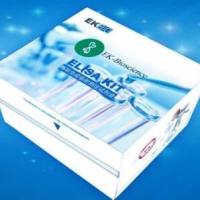In recent years, the endocytosis and the intracellular trafficking of many G protein-coupled receptors (GPCRs) have been evaluated.
A milestone in the analysis of the transport of GPCRs was the molecular cloning of the green fluorescent protein (GFP) from
the jellyfish Aequorea victoria
by Prasher and coworkers (1
, 2
). Site-directed mutagenesis yielded derivatives with higher photostability, improved quantum yield, and different excitation/emission
spectra (3
– 5
).For the generation of GPCR.GFP fusion proteins, the cDNA encoding GFP is in almost all cases genetically fused in frame
to the 'end of cDNA encoding the GPCR (6
). The encoded fusion protein comprises a GPCR with the GFP moiety fused to its intracellular C-terminus. Although GFP is
a relatively large protein (238 amino acids, 26.9 kDa) and its size is almost equal to that of most GPCRs (about 400 amino
acids), the functional properties (ligand affinity, signal transduction, or intracellular trafficking) of GPCRs are not, or
are only slightly, altered (6
–8
). Thus, GFP and its derivatives have been widely applied as fluorescent probes to visualize trafficking of GPCRs in real
time, to analyze GPCRs' mobility by fluorescence recovery after photobleaching (FRAP; 9
), and to study protein-protein interactions of GPCRs by fluorescence resonance energy transfer (FRET; 10
, 11
). The relatively high stability of GFP and its chromophore in the presence of detergents and fixatives also allows the use
of GPCR.GFP fusion proteins in co-localization studies with immunocytochemistry.






